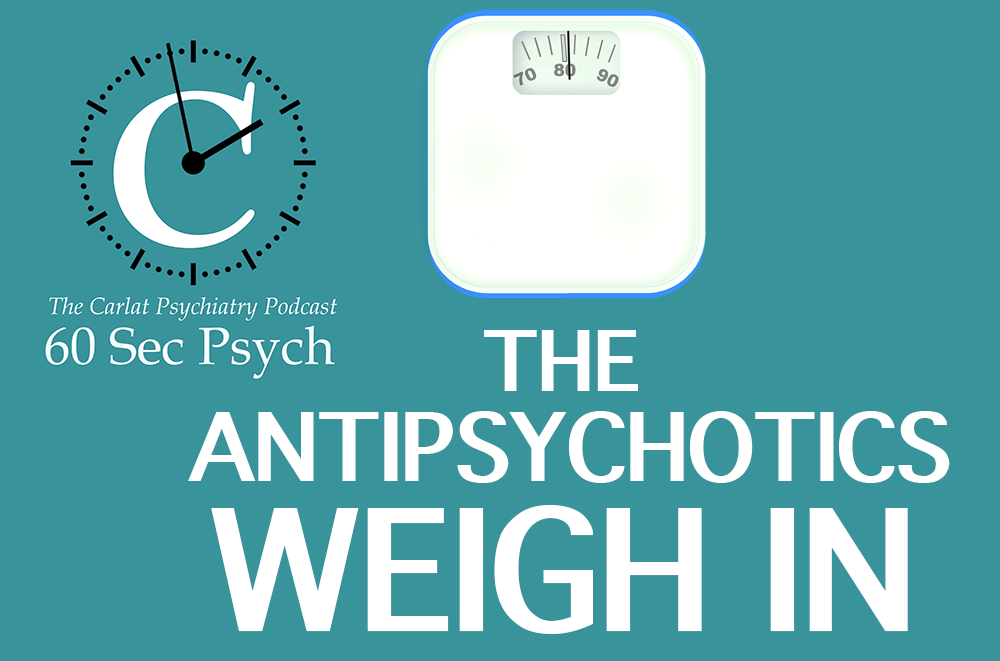When it comes to weight gain on antipsychotics, most of what we know is from industry sponsored trials, and most of them were done on Caucasian patients. Few of those studies compare the antipsychotics side by side, which leaves us guessing as to how they compare across side effects. This study changes that. [Link]
Published On: 9/23/2020
Duration: 2 minutes, 19 seconds
Transcript:
When it comes to weight gain on antipsychotics, most of what we know is from industry sponsored trials, and most of them were done on Caucasian patients. Few of those studies compare the antipsychotics side by side, which leaves us guessing as to how they compare across side effects.
This study changes that. It’s a huge random controlled trial of over two thousand patients with schizophrenia in China.They were randomized, get this – to 7 different antipsychotics. I don’t think I’ve ever seen a 7-arm trial. The catie only had 5.
Their focus was on metabolic outcomes – and I’m going to skip right to the bottom line.
Here’s how the 7 stacked up in terms of risk for metabolic syndrome; Weight Gain, Waist Circumference, Blood Pressure, Glucose and Triglycerides – the worst offender was Olanzapine.
Then Quetiapine, 3rd was perphenazine, 4. risperidone. Tied for 5th and 6th place were Aripiprazole and haloperidol. Ziprasidone/Geodon came in with the lowest risk.
To give you an idea of the spread there, olanzapine, quetiapine and perphenazine were about 3 times more likely than ziprasidone to cause metabolic syndrome while the other 3 were twice as likely.
The authors concluded that the ranking of antipsychotics by metabolic effects was similar for the Chinese as we see in other studies of Caucasians.
They also found you could detect these changes in as early as 2 weeks with weight and waist circumference.
Perhaps the most novel finding here is that the typicals are almost as bad as atypicals when it comes to metabolic syndrome.
Got feedback? Take the podcast survey.


_-The-Breakthrough-Antipsychotic-That-Could-Change-Everything.jpg?1729528747)



